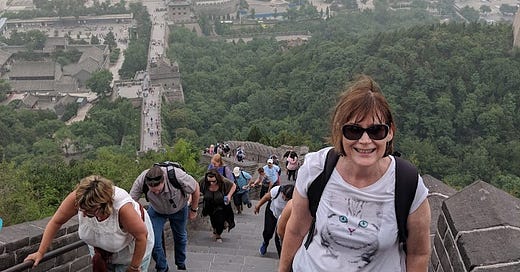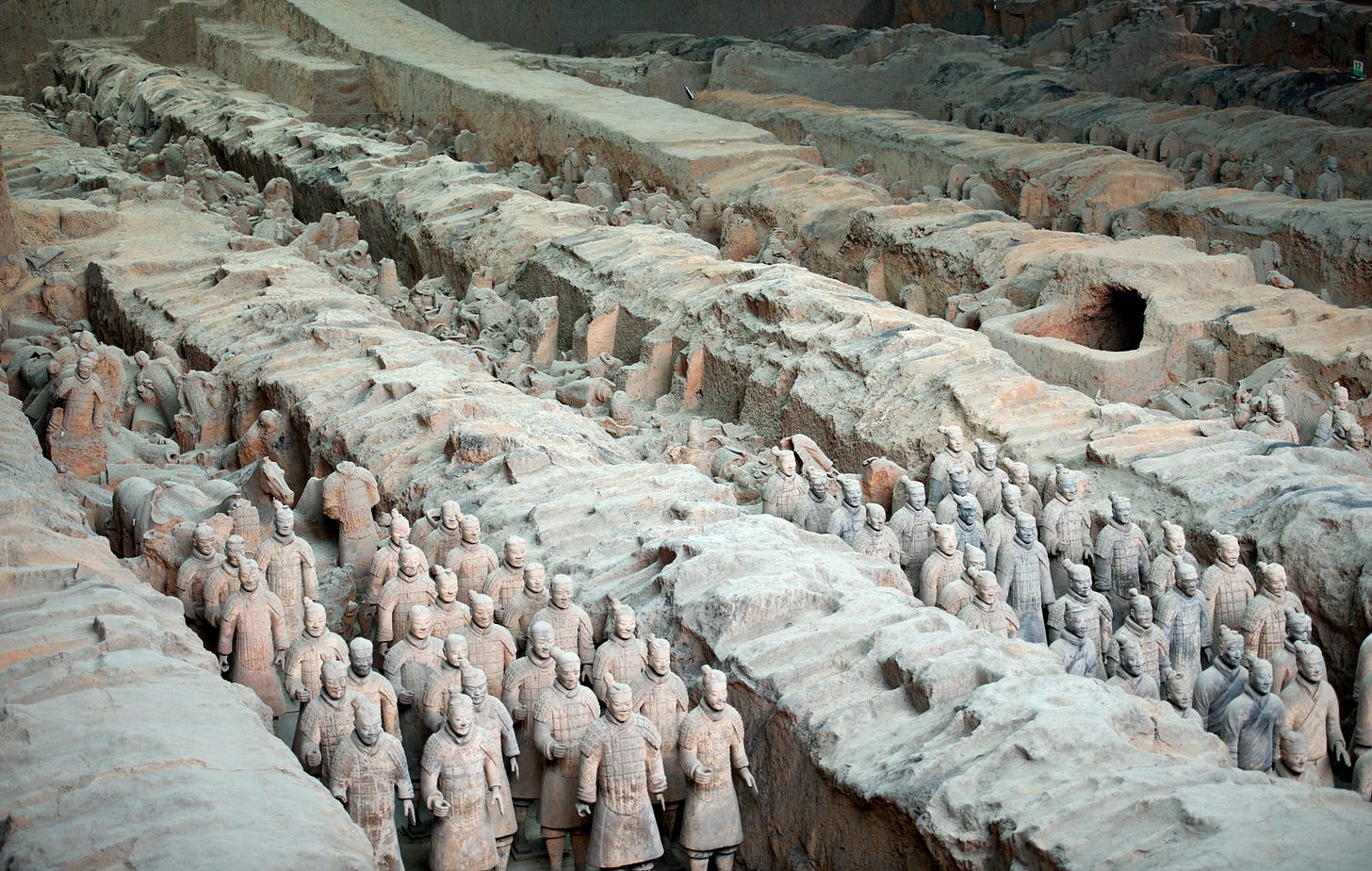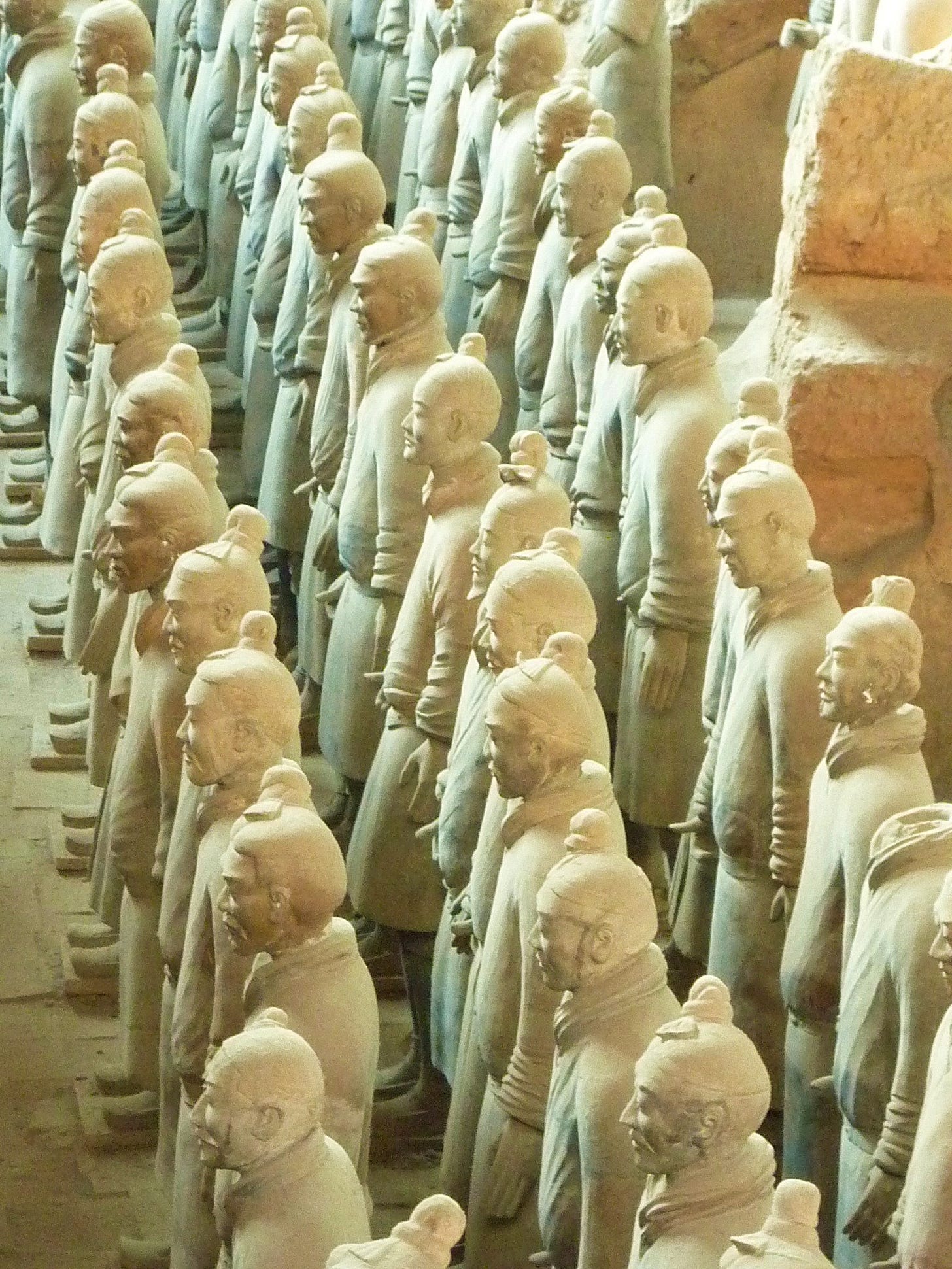Travelling – climbing the Wall and digging deep
"The view from the top is beautiful, but the lessons learned on the climb are invaluable."
Why Do We Make Plans When We Have No Control?
It was June 2018, and my long-awaited trip to China was about to begin. My flight was scheduled to depart from Brisbane just after midnight, with a short 1.5 hour stopover in Hong Kong before continuing to Beijing. Since my daughter had limited time to drop me off, I arrived at the airport hours in advance, eagerly anticipating my adventure.
But, as travel often goes, my plans unravelled quickly. My departure was delayed by two hours, throwing my tight connection into jeopardy. When we finally landed in Hong Kong, I rushed off the plane, convinced I had all my belongings. Then it hit me - I had left my phone in the seat pocket. With no time to report it missing, I reassured myself that I could sort it out once I arrived in Beijing, as both flights were with the same airline.
On arrival in Beijing, my troubles multiplied. As the luggage carousel emptied, I realized my suitcase was missing. Now I had two reports to file - one for my lost phone and another for my lost luggage.
As I completed the paperwork, I tried to stay positive. “Okay,” I told myself, “that’s three things - flight delay, lost phone, and missing luggage. The rest of the trip should be smooth sailing.”
But fate had other plans. My tour guide was nowhere to be found. Feeling exhausted, thirsty and anxious, I started asking anyone who looked like they might speak English for help. Eventually, I discovered that my guide had given up on me and left his sign with another operator. Thankfully, I was finally collected and taken to my hotel.
The drive into Beijing took 1.5 hours - despite the wide, four-lane motorway. By the time I checked in, I had an stress-induced dehydration headache. I collapsed onto the bed and managed to get some sleep. After 36 hours in the same clothes, I didn’t exactly feel fresh, but I had no choice but to head down for breakfast.
Then, finally, some good news! My luggage had arrived. The sheer relief of being able to change into clean clothes was indescribable - like stepping into a brand-new outfit. At last, I felt ready to take on the adventure ahead.
The Great Wall of China: A Bucket List Must-See
Day 2 began with a two-hour drive through Beijing’s relentless traffic toward the Juyongguan Pass—the gateway to the Great Wall of China. As I stepped onto the ancient stones, I was overwhelmed by the thought that people had been walking this path for over 700 years.
The Great Wall: Facts & Stories
- Is it really a wall? Not exactly. The Great Wall is a vast network of fortifications, including beacon towers, barracks and garrisons, forming a complex defence system.
- How long is it? The total length is an astonishing 21,196 km, stretching across mountains and deserts from China’s east coast to the western frontier.
- How long did it take to build? Construction spanned over 2,000 years, with Emperor Qin Shi Huang first linking sections together in 220 B.C.
- What’s it made of? Bricks, cut stone, lime mortar, and, in some areas, rammed earth, wood, and uncut stones were used based on local resources.
- Was there quality control? Yes! Ming Dynasty bricks were stamped with details like production location and responsible officials, ensuring accountability.
- Beyond defence, what was it used for? In the Yuan Dynasty (1272-1368), the Juyong Pass served as a major route between Beijing and Inner Mongolia, lined with palaces, temples and gardens.
- Any legends? One of the most famous is the tale of Lady Mengjiang, who searched for her husband, a forced labourer on the Wall. Upon learning of his death, her grief was so powerful that a section of the Wall collapsed.
Climbing the Wall was more challenging than expected. The steps were uneven, making it impossible to find a steady rhythm. The smog added to the difficulty. Eventually, I admitted defeat and consoled myself with a coffee and cake at a nearby kiosk. I may not have climbed far, but I was there - I touched history, and I had the photos to prove it!
The Terracotta Warriors: A Stunning Archaeological Wonder
By Day 4, we were off to Xi’an to see one of China’s most iconic treasures - the Terracotta Warriors. I had high expectations, but nothing could have prepared me for the sight of thousands of life-sized soldiers standing in perfect formation.
The Terracotta Warriors: What You Need to Know
- When were they discovered? In 1974, local farmers digging a well unearthed a clay head, leading to one of the greatest archaeological finds in history.
- Why do they exist? Emperor Qin Shi Huang, China’s first emperor, believed they would protect him in the afterlife.
- What was buried with him? Everything he might need: an entire army, chariots, acrobats, bronze birds, weapons, and even his concubines - some buried alive.
- How many are there? Experts estimate around 8,000 soldiers, 130 chariots, and 670 horses, all carefully arranged according to military rank.
- How long did it take to complete? Around 40 years, with more than 700,000 labourers working on the project.
Fascinating Facts
- Each warrior has unique facial features and expressions.
- They were originally painted in vibrant shades of blue, green, and red.
- The first exhibition outside China was in Australia in 1982.
- The figures are still being unearthed and restored, piece by piece.
Standing inside the excavation pit, surrounded by thousands of warriors, I was speechless. The sheer scale, detail and vision of Emperor Qin Shi Huang left me in awe. It was incredible to think that such a powerful belief system led to the creation of this masterpiece over 2,000 years ago.
I couldn’t help but envy the modern-day archaeologists meticulously piecing the soldiers back together. What an amazing job - turning broken fragments into something whole again, preserving history for the world to see.
And that’s when I knew - while I loved the Great Wall, the Terracotta Warriors had truly captured my heart.
As I reflected on my journey, I realised that no matter how much we plan, travel is full of surprises. Some are frustrating, some are thrilling, but all become part of the adventure. And in the end, those unexpected moments often make the best stories.
Click for Youtube Terracotta Warriors story






